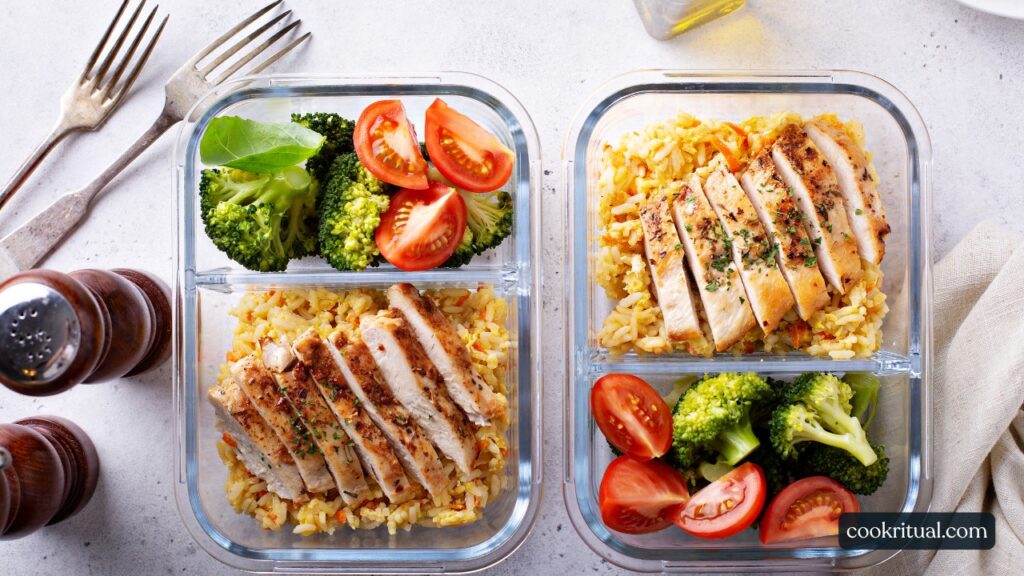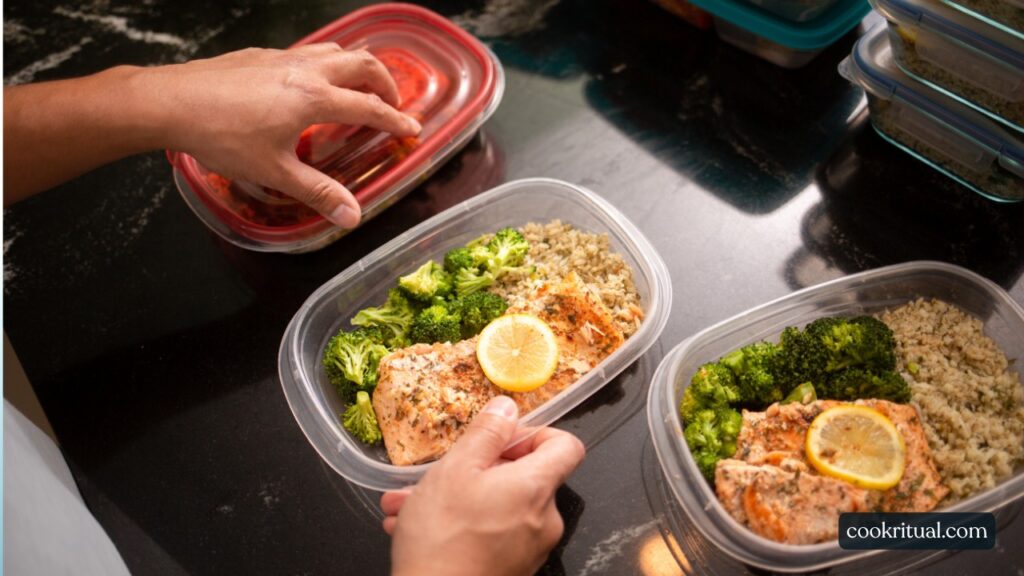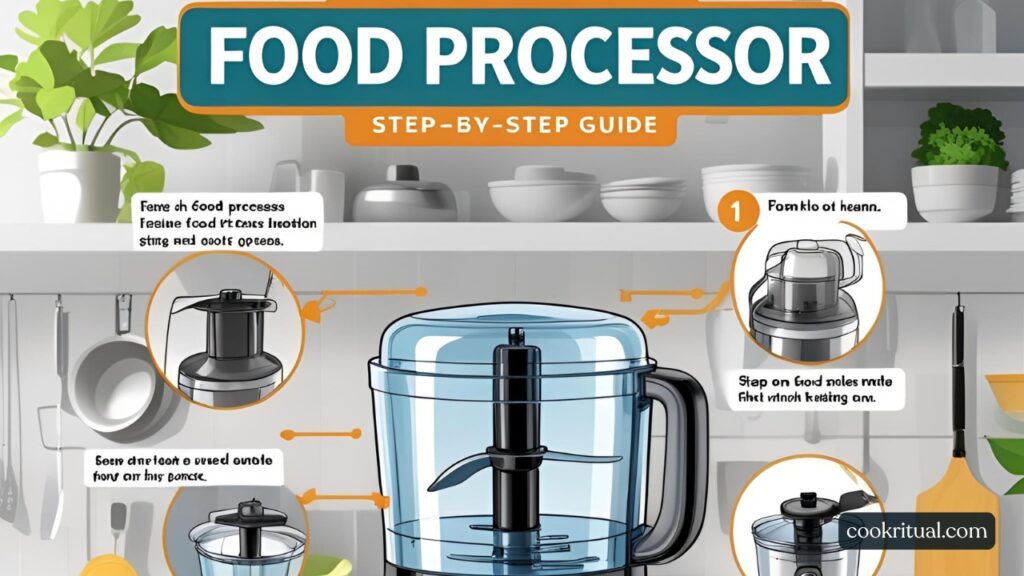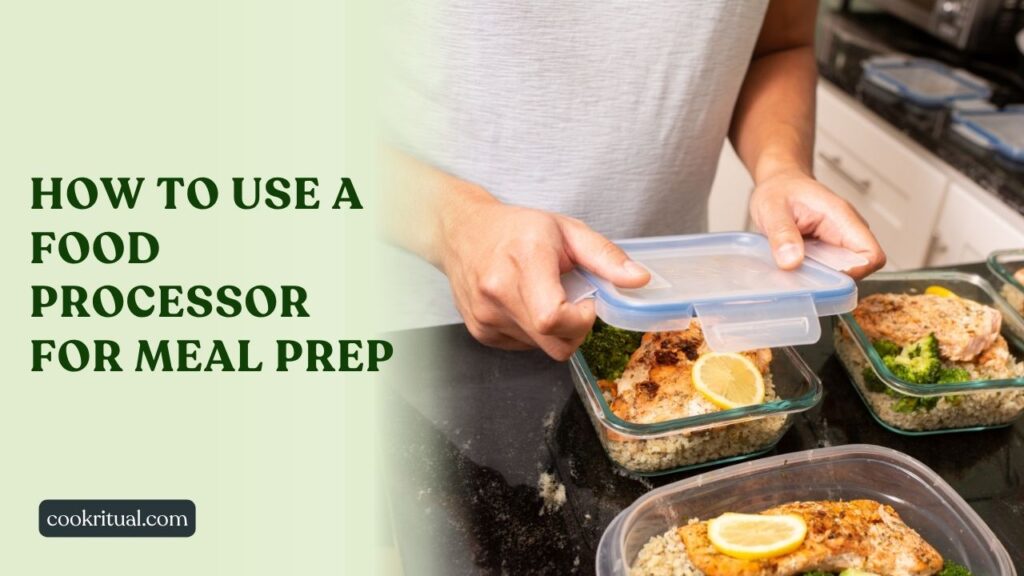A food processor can be your secret weapon for faster, smarter, and healthier meal prep—especially when life gets busy. Whether we’re juggling work, family, or just trying to eat better, finding ways to save time in the kitchen without sacrificing quality is key.
We’ve all been there—chopping mountains of vegetables by hand, getting stuck in the same recipes, or skipping meal prep altogether because it feels overwhelming. That’s where a food processor steps in. From dicing onions in seconds to whipping up fresh hummus or slicing sweet potatoes for the week, this versatile appliance can transform how we approach cooking.
In this guide, we’ll explore exactly how to use a food processor for meal prep—from the basics of operation to real-life tips, recipe ideas, and maintenance hacks. Whether you’re a beginner or just haven’t fully tapped into your processor’s potential, this article is designed to make healthy eating more doable, one shortcut at a time.
Contents
- 1 What Is a Food Processor and How Does It Work?
- 2 Why Use a Food Processor for Meal Prepping?
- 3 Step-by-Step Guide: How to Use a Food Processor for Meal Prep
- 4 Best Food Processor Features for Meal Prep
- 5 Meal Prep Ideas Using a Food Processor
- 6 Maintenance and Cleaning Tips
- 7 Buying Guide: Choosing the Right Food Processor for Your Needs
- 8 FAQs: Common Questions About Meal Prepping with a Food Processor
- 9 Final Tips and Actionable Recommendations
What Is a Food Processor and How Does It Work?
A food processor is a kitchen tool that helps us chop, slice, shred, blend, and even knead dough in just minutes. It’s built for speed and consistency, making it ideal for people who want to prep food quickly without a mess.
Main Parts and Attachments
Most food processors come with these key parts:
- Base motor – powers the processor
- Bowl and lid – where the food goes
- Blades and discs – each designed for specific tasks like slicing or chopping
- Feed tube and pusher – lets us add ingredients safely
We can use different attachments to handle everything from shredding carrots to mixing a dip. For a deeper dive into food processor parts, check out this guide from Consumer Reports.
Settings and Functions
Food processors often have simple buttons like “Low,” “High,” and “Pulse.” Pulse mode helps control texture—perfect for making chunky salsa or smooth hummus.
Some models include preset modes for kneading dough or slicing vegetables evenly. Learning when and how to use each setting helps us get better results every time.
Food Processor vs Blender: What’s the Difference?
People often confuse a food processor with a blender, but they’re built for different jobs. A blender works best for liquids like smoothies or soups. A food processor, on the other hand, handles solid foods—like chopping onions, slicing potatoes, or grating cheese—more effectively.
For more on this, the Harvard T.H. Chan School of Public Health offers useful tips on choosing kitchen tools for healthy meal prep.
Why Use a Food Processor for Meal Prepping?
Meal prepping with a food processor saves time, cuts stress, and supports healthier eating. We don’t have to spend hours in the kitchen to make balanced meals for the week.
Key Benefits
Here’s how a food processor makes meal prep easier:
- Speeds up prep time – slice or shred in seconds
- Reduces effort – no more crying over onions or grating by hand
- Improves consistency – perfect cuts every time
- Saves money – prepping at home beats takeout costs
We can prep an entire week’s worth of veggies in under 30 minutes. That gives us more time to focus on cooking and eating well.
Helps with Healthy Eating
Having ready-to-go ingredients means we’re more likely to make smart food choices. Want to eat more veggies? Chop a big batch of peppers, onions, and carrots ahead of time and store them in containers. Looking for protein options? Use the food processor to make chicken salad, chickpea patties, or homemade hummus—all meal prep-friendly ideas backed by USDA dietary guidelines.
Step-by-Step Guide: How to Use a Food Processor for Meal Prep
Let’s break it down into a few simple steps to help us get started.
1. Stay Safe Before You Start
- Read the manual
- Place the processor on a flat, dry surface
- Always lock the bowl and lid in place
- Keep fingers away from blades
- Use the pusher—not hands—to add food through the feed tube
2. Pick the Right Blade or Disc
Each job needs the right tool:
- S-blade – for chopping, mixing, or pureeing
- Shredding disc – perfect for cheese, carrots, or cabbage
- Slicing disc – great for cucumbers, zucchini, and potatoes
- Dough blade – used for making pizza or bread dough
If unsure, refer to this KitchenAid blade guide to see which blade fits which task.
3. Start Prepping
Here are a few common tasks:
- Chopping vegetables: Cut into chunks, use pulse mode to avoid mush
- Slicing fruits: Choose the slicing disc for thin, even cuts
- Shredding cheese or cabbage: Use the shredding disc for fast results
- Mixing dough or sauces: Add liquids slowly through the feed tube
4. Store Your Prepped Ingredients
Once done, place items in clear, labeled containers. Keep wet and dry items separate. Store in the fridge for 3–5 days. For more tips, check the FDA’s guide on food storage.
Best Food Processor Features for Meal Prep

Choosing the right food processor makes meal prep even easier. The right features help us prep faster, cleaner, and with better results.
Must-Have Attachments and Accessories
To get the most from our food processor, look for these tools:
- S-blade for chopping, pureeing, or mixing
- Shredding disc for cheese, cabbage, or carrots
- Slicing disc for even veggie or fruit cuts
- Dough blade for bread or pizza making
- Spatula for scraping down the sides safely
A few models also include julienne or French fry discs, which are perfect for homemade veggie fries.
For a full list of helpful attachments, visit this KitchenAid accessories guide.
Capacity and Power for Efficient Prep
If we prep in big batches, go for a 10–14 cup bowl. For small kitchens or one-person meals, a 7-cup model works fine. Choose a processor with at least 600 watts of power. This ensures it can handle tough items like nuts or firm veggies.
Need help choosing the right size? This Consumer Reports buying guide is a great resource.
Easy-to-Clean Design
Look for models with dishwasher-safe parts. A wide mouth feed tube also makes cleaning and loading easier. Many modern food processors now come with sealed bowls that prevent leaks and spills.
Meal Prep Ideas Using a Food Processor
A food processor makes it easy to try new meal prep recipes without spending all day in the kitchen. We can whip up snacks, meals, and sides that are healthy and ready to go.
Healthy Meal Prep Recipes

Here are a few easy and healthy recipes we can batch prep:
- Cauliflower rice – use the S-blade to pulse florets
- Homemade hummus – blend chickpeas, tahini, garlic, and lemon
- Shredded chicken salad – pulse cooked chicken with celery and Greek yogurt
- Veggie patties – mix beans, onions, carrots, and oats
- Energy bites – pulse dates, nuts, and cocoa powder
For more clean eating ideas, visit Harvard Health’s Nutrition Source.
Vegetarian, Vegan, or Low-Carb Options
We can create plant-based meals by blending:
- Lentils or chickpeas for burgers or dips
- Zucchini or carrots for muffins or fritters
- Almonds or oats for dairy-free milk or flour alternatives
Low-carb eaters can prep zoodles, nut butters, or cauliflower mash in just minutes.
Prep Snacks, Smoothies, and Sauces
The food processor is great for quick extras:
- Chop salsa, guacamole, or pico de gallo
- Blend nut butters or overnight oats
- Slice fruits for grab-and-go snacks
Many of these ideas are beginner-friendly and fit into a MyPlate balanced meal plan.
Maintenance and Cleaning Tips
Taking care of our food processor keeps it working safely and smoothly. With just a few simple habits, we can extend its life.
How to Clean a Food Processor Properly

After each use:
- Unplug the unit
- Remove blades carefully
- Wash the bowl, lid, and blades in warm soapy water or the dishwasher
- Wipe the base with a damp cloth
- Let all parts dry before reassembling
Never submerge the motor base. Always dry blades right away to avoid rust. For full safety tips, check the FDA’s food safety guidelines.
Tips to Make It Last Longer
- Don’t overload the bowl
- Use the pulse function for better control
- Avoid grinding bones or extra-hard items
- Sharpen or replace blades if they become dull
Safe Storage for Blades and Accessories
Store blades in a protective case or wrapped in a towel to avoid cuts. Keep accessories in a labeled box or a drawer organizer to avoid misplacing them.
Buying Guide: Choosing the Right Food Processor for Your Needs
The right food processor for meal prep depends on what we cook, how often, and how much we prep at once.
Budget-Friendly vs High-End Models
If we only need to chop veggies or make hummus, a budget-friendly model with basic blades is enough. Brands like Hamilton Beach or Black+Decker offer reliable models under $100.
For frequent use or big batch cooking, a high-end food processor with multiple blades, strong power, and bigger capacity works better. Models from Cuisinart or Breville last longer and perform faster.
This Good Housekeeping guide compares top models across different price points.
Top Brands and User Reviews
Before buying, check user reviews. Pay attention to:
- Ease of cleaning
- Blade performance
- Noise level
- Durability
Brands like KitchenAid, Ninja, and Magimix often score high in both home and expert reviews.
Where to Buy and What to Avoid
Buy from trusted retailers like Amazon, Target, or Bed Bath & Beyond. Avoid off-brand models with unclear warranties or missing safety features.
Make sure it has BPA-free parts, a safety lock, and comes with a warranty of at least 1 year.
FAQs: Common Questions About Meal Prepping with a Food Processor
Can I use a food processor for frozen ingredients?
Yes, but only if the blades are strong and the user manual says it’s safe. Some models can handle frozen fruits or veggies, especially for smoothies or sauces. Learn more about food safety with frozen foods from the USDA.
Is it safe to wash all parts in the dishwasher?
Most parts are dishwasher-safe, but always check the manual. The motor base should only be wiped with a damp cloth—never submerged in water.
Can it replace a blender or mixer?
A food processor can do many jobs, but not all. It can’t fully replace a blender for liquids or a stand mixer for large batches of dough. Use it where it works best—chopping, slicing, shredding, and pureeing.
How long does meal prepped food stay fresh?
Most chopped vegetables and prepared sauces stay fresh for 3 to 5 days in the fridge. Use airtight containers, and follow the FDA’s storage guide to stay safe.
Final Tips and Actionable Recommendations
Meal prepping with a food processor is one of the easiest ways to save time and eat healthier every day.
Quick Tips for Beginners
- Start small: prep 2–3 meals at first
- Label and date each container
- Clean as you go to save time later
- Try different blades to learn what works best
Free Resources and Tools
- Download a free weekly meal planner from EatRight.org
- Try the USDA’s MyPlate planner for balanced food ideas
- Follow trusted YouTube channels like America’s Test Kitchen for video tutorials
Final Thoughts
Using a food processor for meal prep helps us stay organized, eat better, and enjoy cooking more. Whether we’re new to prepping or ready to level up our kitchen skills, this tool can be a true time-saver.


